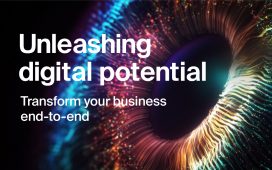The infinite data out there is already redefining how products are going to be marketed to us in the near future, says Daniel Vaczi.
The shift in the approach
Predicting consumer behaviour has never been an easy task. In the past it was based on surveys, panels, interviews, etc, which gives a vague idea of triggers, motivations and in what situation consumers purchase and use competitive products. Insights were based on sample sets of data supported by theory rather than empirical evidence. The old way of mapping consumer behaviour is becoming redundant with the birth of the digital natives who spend more time watching YouTube than TV, shop online more frequently than going to the local grocery store and stay in touch with friends through social media more regularly than meeting them in real life. What fascinates me about this shift as a marketer is that the more we live online the more trace we leave behind about our consumer behaviour i.e. what we like/dislike, where we like to travel, what we eat, what we read, what we listen to, how we feel, what life stage we are in (single, just got engaged, became a parent), and so on. Essentially, your online history is like your DNA, a set of data that defines you. When data is used intelligently it can lead to tailored marketing messages that fit consumers needs and wants perfectly – after all no one wants to see generic offers from irrelevant companies.
The devil is in the data
Lookalike modelling in programmatic buying provides a solution for brands to find new customers based on current customers’ online behaviour. In essence, a consumer who reads, likes, visits, etc similar content/websites compared to my current existing customers will be likely to buy my product too. These models and technologies rely on cookies and are perfect for short-term prediction since cookies rarely survive longer than a year, often just a few months as users delete them or they just simply expire. This particular technical challenge makes long-term consumer behaviour prediction a little more complex and yet to be fully developed.
Imagine a scenario where we have two consumers, one is 25 the other is 35 years of age. We have historical data (online behaviour, characteristics etc) about both consumers since they were 15. We match their online behaviours and thousands of characteristics and we find that they are very similar between the age of 15 and 25 – 10 years of data match perfectly. Does this mean that we can then predict with high accuracy what this young 25-year-old consumer will buy in the next 10 years? If the answer is yes then, for example, at what point should I start engaging with this young man to be a preferred choice when it comes to making a purchase decision? Or if I know that this young man in five years time will probably buy a competitor car brand then how well in advance should I start talking to him about the benefits of my car brand and through what channels and what order? There are tons of other questions that need to be considered if such data is available which can transform marketing plans and open new directions.
The above might sound futuristic to some but it already exists in some industries. Take a look at the insurance sector. Insurance companies, for example, track life expectancy information to help in determining the cost of insurance policies. Insurance companies have access to very personal information such as medical history, which makes their mathematical models highly accurate too.
Understanding the real value of your customer
Now of course there’s a cost attached to (almost) everything in this world. The longer the journey leading up to the purchase the higher the advertising cost becomes, which impacts ROI. That is why incorporating lifetime value into the equation is fundamental when it comes to long-term marketing strategies. ROI should be used as a side indicator of success as it ignores various elements such as retention rate, frequency of purchase, etc.
Also, of course we have to make a distinction between low and high investment products. The higher the purchase value the longer we think whether we should buy it or not which also means we research more which equals more data points and eventually more accurate prediction. Furthermore, low volume and low margin items might not justify the cost of investment.
In summary…
The vast amount of data that is available nowadays is driving technology and software companies towards solutions that have already started transforming the way we develop marketing strategies. Tell us what you think about big data and its implication.
(Daniel Vaczi is head of digital at MediaCom MENA @mediacommena)










